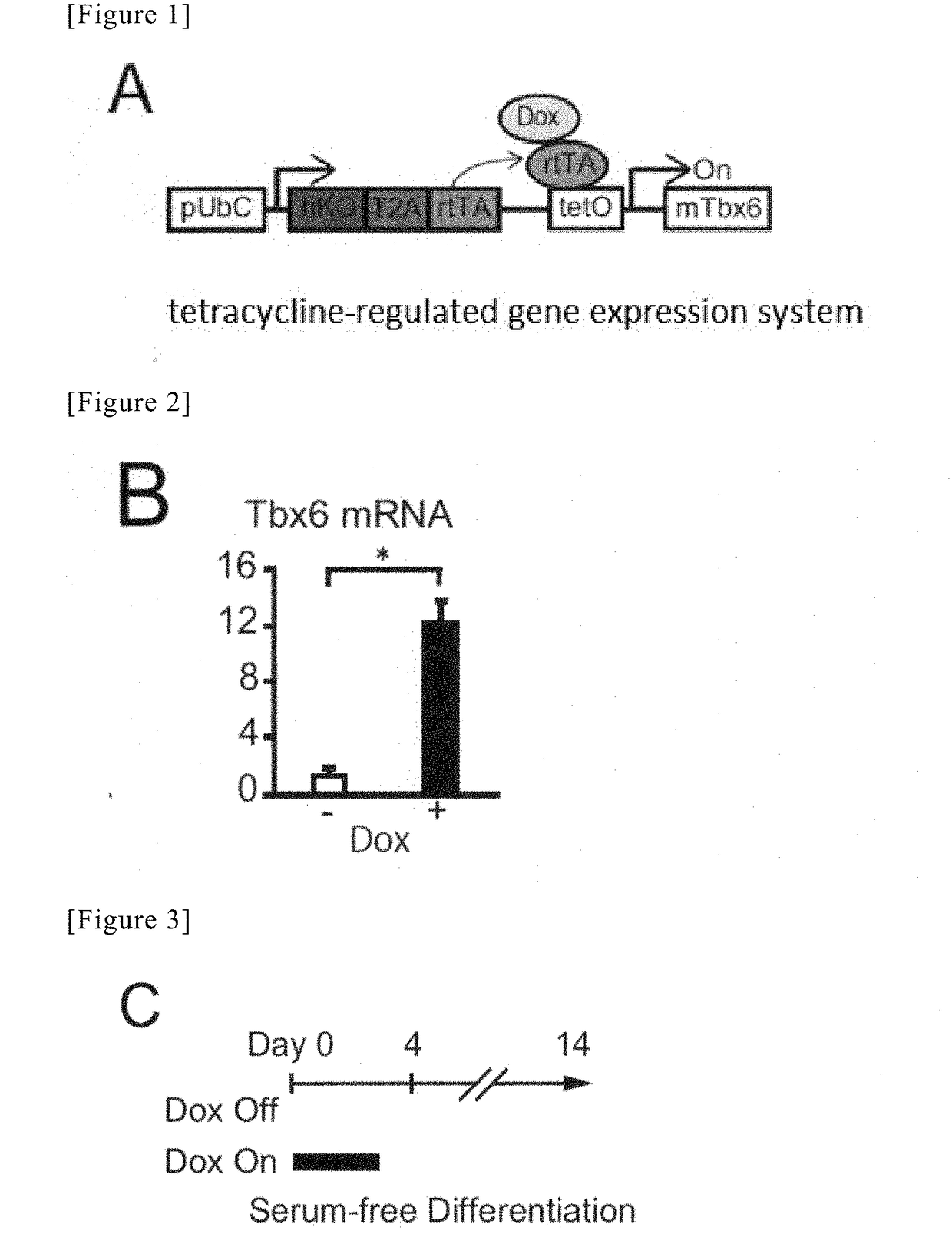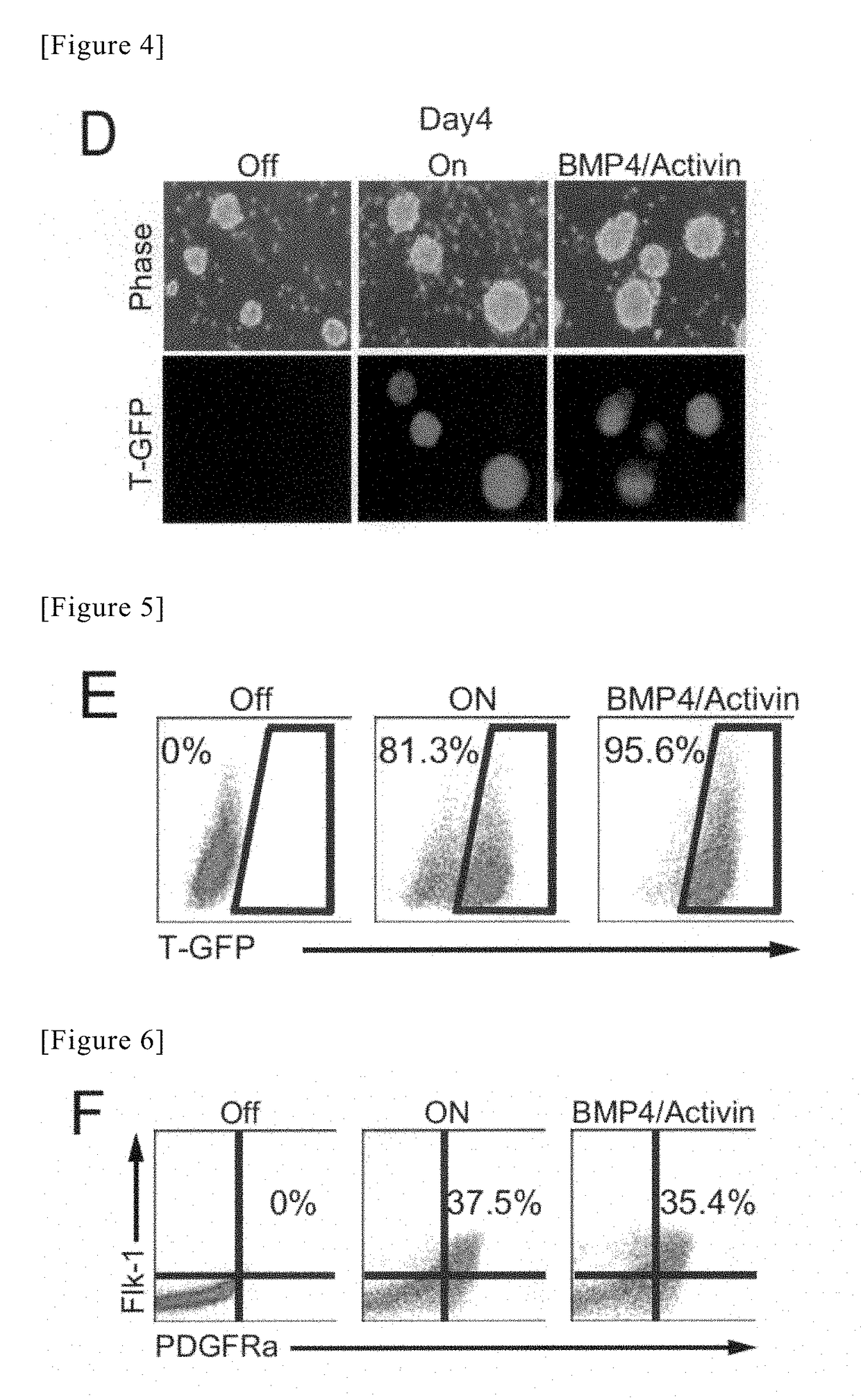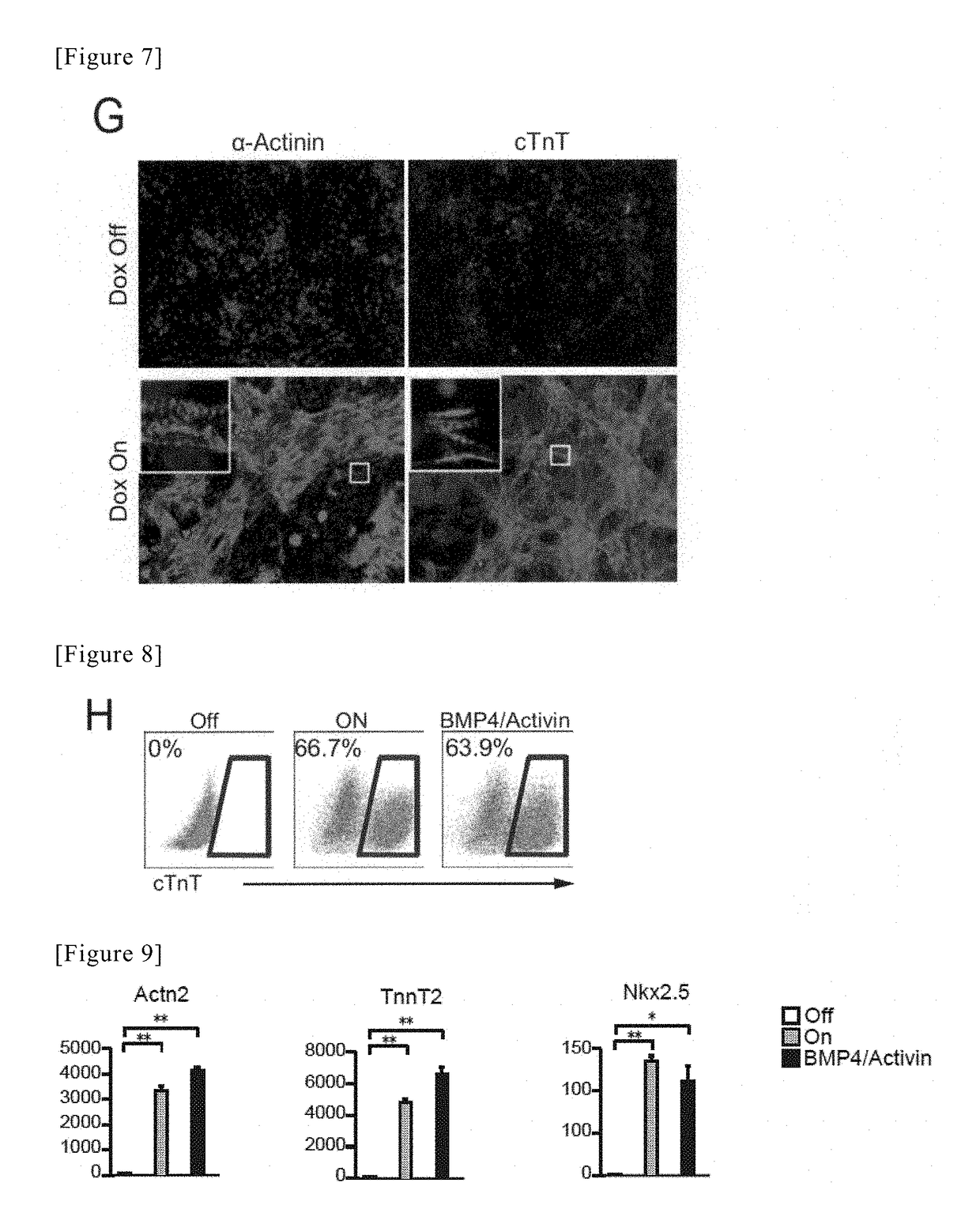Method for producing cardiac precursor cell and myocardial cell from pluripotent stem cell
a technology of pluripotent stem cells and cardiac precursor cells, which is applied in the field of producing cardiac precursor cells and myocardial cells from pluripotent stem cells, can solve the problems of insufficient reproducibility and cost, the method of inducing cardiac progenitor cells, and the inability to meet the needs of patients, and achieves high efficiency.
- Summary
- Abstract
- Description
- Claims
- Application Information
AI Technical Summary
Benefits of technology
Problems solved by technology
Method used
Image
Examples
example 1
[Example 1] Culture of Mouse ES Cells
[0116]Mouse T-GFP ES cells (obtained from Prof. Gordon Keller, Toronto Medical Discovery Tower MaRS Centre 101 College Street, Room 8-706 Toronto, ON MSG 1L7 CANADA) were inoculated at a concentration of 1.0×106 cells / dish into a gelatin-coated 10-cm tissue culture dish (172958, Thermo Scientific), and were then cultured using a medium for ES cells (Table 1) under conditions of 37° C. / 5% CO2. Thereafter, subculture was carried out every 2 or 3 days. The T-GFP ES cells are cells that exhibit positive to GFP, when T as a marker transcriptional factor for cardiac mesoderm is expressed.
TABLE 1Medium for ES cellsFBS (Fetal Bovine Serum) (Thermo Scientific, SH30071.03) 50mL Glasgow Minimum Essential Medium (Sigma, G5154) 500mL PSA 5 mL Sodium Pyruvate (Sigma, S8636) 5mL GlutaMAX (Invitrogen, 35050-061) 5 mL Non-essential amino acids solution 100× (Invitrogen, M7145) 5 mL Mercaptoethanol (Sigma, 21985) 0.5mL Leukemia inhibitory factor (Millipore, ESG110...
example 2
[Example 2] Induction of Cardiac Progenitor Cells and Cardiomyocytes from Mouse ES Cells, Using Cytokine
[0117]The ES cells, which had been subcultured in Example 1, were washed with PBS (−) after aspiration of the medium for ES cells, and thereafter, 2 mL of 0.05% Trypsin-EDTA was added to each dish, and the cells was then left at rest under conditions of 37° C. / 5% CO2 for 3 minutes. After the floating of the cells in the culture medium had been confirmed, the reaction was neutralized with a solution consisting of 1 mL of FBS / 7 mL of IMDM, and were then recovered in a 15-mL tube (430791, Corning). The recovered cells were centrifuged under conditions of 100 RPM for 3 minutes. Thereafter, a supernatant was aspirated, 10 mL of IMDM was then added to a cell precipitate, and the number of cells was then counted. A solution of 7.5×105 cells was transferred into a new 15-mL tube, and was then centrifuged under conditions of 1100 RPM for 3 minutes, followed by aspiration of the supernatant...
example 3
[Example 3] Introduction of Tetracycline-Regulated Gene Expression System into Mouse ES Cells
[0122]In Example 3, a Tbx6 gene was introduced into mouse ES cells, using lentivirus. The used vector is able to stage-specifically control the expression of the introduced gene by addition of doxycycline (FIG. 1).
[0123]293T cells were inoculated at a concentration of 6.0×106 cells / dish into a 10-cm tissue culture dish (353047, Corning), and were then left at rest under conditions of 37° C. / 5% CO2 (Day 1).
[0124]On the following day (Day 2), Solution A, in which 36 μL of Lipofectamine (1168-019, Invitrogen) was mixed with 1500 μL of Opti-MEM (31985-070, Gibco), and Solution B, in which 25 μg of CSIV-TRE-RfA-UbC-KT-Tbx6 plasmid, 10 μg of pMDL, and 10 μg of pCMV-VSV-G-RSV-Rev were mixed with 1500 μL of Opti-MEM, were prepared, and were then left at rest at room temperature for 5 minutes. Thereafter, Solution C was prepared by mixing the Solution A with Solution B, and was then left at rest for ...
PUM
| Property | Measurement | Unit |
|---|---|---|
| concentration | aaaaa | aaaaa |
| concentration | aaaaa | aaaaa |
| pore size | aaaaa | aaaaa |
Abstract
Description
Claims
Application Information
 Login to View More
Login to View More - R&D
- Intellectual Property
- Life Sciences
- Materials
- Tech Scout
- Unparalleled Data Quality
- Higher Quality Content
- 60% Fewer Hallucinations
Browse by: Latest US Patents, China's latest patents, Technical Efficacy Thesaurus, Application Domain, Technology Topic, Popular Technical Reports.
© 2025 PatSnap. All rights reserved.Legal|Privacy policy|Modern Slavery Act Transparency Statement|Sitemap|About US| Contact US: help@patsnap.com



